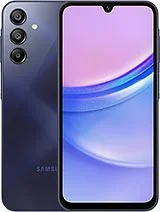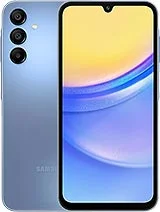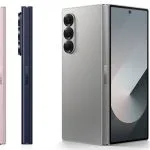Choosing the right smartphone can be a challenge, especially when two models are as closely matched as the Samsung Galaxy A16 and the Samsung Galaxy A15. Both phones promise great features at an affordable price, but how do they really stack up against each other? Let’s dive deep into the details and help you figure out which one deserves your hard-earned money.
2. Overview
Before we get into the nitty-gritty, let’s take a quick overview of what each phone offers.
2.1. Samsung Galaxy A16
The Samsung Galaxy A16 is the newer kid on the block, aiming to build upon the strengths of its predecessor with improved features and performance. With a slightly more modern design and a few under-the-hood upgrades, it’s positioned as a budget-friendly option with some premium-like attributes.

2.2. Samsung Galaxy A15
The Samsung Galaxy A15, on the other hand, was a solid contender in its own right. Launched with a focus on balancing performance and price, it quickly became a favourite for users who wanted reliable performance without breaking the bank. But can it still hold its ground against its successor?

3. Design and Build
When it comes to design, both phones have their own unique charm, but subtle differences could sway your preference.
3.1. Material and Build Quality
The Samsung Galaxy A16 sports a slightly more refined build, utilizing high-quality polycarbonate materials that give it a sleek and sturdy feel. It’s designed to feel good in your hand, with a textured finish that adds a bit of flair.
Table of Contents
The Samsung Galaxy A15 also uses polycarbonate but with a more traditional design approach. It’s a bit bulkier compared to the A16, but still feels durable and well-made. If you’re into something that feels solid, the A15 won’t disappoint.
3.2. Color Options
Samsung has always been about offering vibrant colour options, and both of these models are no exception. The A16 comes in a range of fresh colours like Mint Green, Charcoal Black, and Lavender Purple, while the A15 is available in classic shades such as Midnight Black, Pearl White, and Ocean Blue. Whether you prefer bold or subdued, there’s a colour for everyone.
4. Display
A phone’s display can make or break the user experience, so let’s see how these two compare.
4.1. Screen Size and Resolution
The Samsung Galaxy A16 features a 6.5-inch display with a 1080p resolution, providing sharp and clear visuals, perfect for binge-watching or gaming. The A15, slightly smaller at 6.4 inches, offers a 720p resolution. While the difference in size is minimal, the jump in resolution on the A16 is quite noticeable, especially if you’re particular about picture clarity.
4.2. Display Technology
Both phones use Samsung’s proprietary Super AMOLED technology, known for vibrant colors and deep blacks. However, the A16’s display is slightly more advanced, offering better brightness and color accuracy, making it a bit more enjoyable under direct sunlight or in dark rooms.
4.3. Refresh Rate
Here’s where the A16 starts to pull ahead significantly: it boasts a 90Hz refresh rate, compared to the standard 60Hz on the A15. That means smoother scrolling and a generally more fluid experience, particularly in gaming or heavy multitasking.
5. Performance
Performance is another critical aspect where the battle between these two phones heats up.
5.1. Processor and GPU
The Galaxy A16 comes equipped with a slightly more powerful processor—an octa-core chipset paired with a Mali-G57 GPU. This combination ensures better performance, particularly in gaming and running multiple apps.
The A15, while still capable, is powered by a slightly older octa-core processor with a Mali-G52 GPU. It handles everyday tasks with ease but might struggle with more demanding applications or gaming at higher settings.
5.2. RAM and Storage Options
The A16 comes in two variants: 4GB RAM with 64GB storage and 6GB RAM with 128GB storage. This gives users the flexibility to choose based on their needs. The A15 offers similar options but maxes out at 4GB RAM with 64GB storage. If multitasking or storing lots of media is crucial for you, the A16’s higher-end option might be more appealing.
6. Camera Setup
Cameras are often a major deciding factor in smartphone purchases, and Samsung knows this well.
6.1. Rear Camera Specifications
The A16 features a triple-camera setup with a 50MP primary sensor, an 8MP ultra-wide lens, and a 2MP macro sensor. The A15, meanwhile, has a dual-camera system with a 48MP main camera and a 5MP ultra-wide lens.
In daylight, both cameras perform admirably, but the A16’s higher megapixel count and additional macro lens give it a slight edge in capturing detail and versatility, especially for close-ups.
6.2. Front Camera Capabilities
Both phones feature a 13MP front camera, ideal for selfies and video calls. The A16, however, benefits from improved software processing, resulting in slightly sharper images with better color reproduction. It’s a small difference, but one that selfie enthusiasts might appreciate.
7. Battery Life
No one likes running out of battery in the middle of the day, so let’s see how these two stack up.
7.1. Battery Capacity
The A16 and A15 both come with a 5000mAh battery, which is more than enough to get you through a full day of heavy use. However, the A16’s more efficient processor and software optimization give it a bit of an edge in overall battery life.
7.2. Charging Speed and Technology
Both phones support 15W fast charging, which isn’t the fastest on the market but is sufficient for a quick top-up. The A16 also benefits from improved heat management during charging, which helps maintain battery health over time.
8. Software and UI
The user interface can make a big difference in your overall experience, so let’s explore what these phones offer.
8.1. Operating System
Both the A16 and A15 run on Samsung’s One UI, layered over Android. The A16 comes with the latest version of One UI out of the box, offering more customization options, better performance, and additional features. The A15, while still receiving updates, is a step behind in terms of software capabilities.
8.2. Custom Features and Enhancements
Samsung is known for packing its phones with extra features, and these models are no different. The A16 includes newer enhancements like improved dark mode, better privacy settings, and enhanced multitasking capabilities. The A15 offers most of these features as well but lacks some of the refinements found in its successor.
Pros and Cons Galaxy A16 & Galaxy A15
Pros
- Improved Display: The Samsung Galaxy A16 features a 6.5-inch Super AMOLED display with a Full HD+ resolution, offering sharp and vibrant visuals. The 90Hz refresh rate is a significant upgrade from the A15, providing smoother scrolling and a better overall viewing experience, especially in games and video playback.
- Better Performance: Equipped with a more recent octa-core processor and a Mali-G57 GPU, the A16 delivers faster performance, particularly in multitasking and gaming. This makes it a solid choice for users who demand a bit more power from their smartphones.
- Enhanced Camera Setup: The A16 comes with a triple-camera setup, including a 50MP primary sensor, which outperforms the A15 in most scenarios. The additional macro lens is a nice touch for those who enjoy close-up photography, offering more versatility in capturing detailed shots.
- Longer Battery Life: With a 5000mAh battery and better power efficiency, the A16 can last longer on a single charge compared to its predecessor. This is ideal for heavy users who need their phone to last all day without frequent recharges.
- Latest Software: The A16 comes preloaded with the latest version of Samsung’s One UI, offering a smoother and more customizable user experience. The new software includes improved privacy settings and enhanced multitasking features that are not as refined in the A15.
Cons
- Slightly Higher Price: The Samsung Galaxy A16 is priced a bit higher than the A15, which could be a drawback for budget-conscious buyers. While the improvements are notable, they come at a cost, and some users might not find the upgrades worth the extra money.
- Incremental Upgrades: Although the A16 has better specs, some of the upgrades feel incremental rather than groundbreaking. If you already own the A15, you might not find a compelling reason to switch to the A16 unless you specifically need the new features.
Samsung Galaxy A15
Pros
- Affordability: The Samsung Galaxy A15 is more budget-friendly, making it an attractive option for users who want a solid smartphone without breaking the bank. Despite being cheaper, it still offers decent performance and features.
- Reliable Performance: Powered by an older but reliable octa-core processor, the A15 handles everyday tasks like browsing, social media, and video streaming with ease. It’s a dependable choice for users who don’t need cutting-edge specs.
- Decent Camera: The A15’s dual-camera setup with a 48MP main sensor delivers good results, particularly in well-lit conditions. While it lacks the versatility of the A16’s camera system, it’s still more than capable for casual photography.
- Good Build Quality: The A15 is well-built, with a design that, while not as modern as the A16, is still durable and aesthetically pleasing. It’s a phone that feels good in the hand and can withstand everyday wear and tear.
Cons
- Lower Display Quality: The A15’s 6.4-inch display, with its lower HD+ resolution and 60Hz refresh rate, doesn’t compare to the A16. The screen is still decent for most tasks, but it lacks the sharpness and fluidity of its successor.
- Older Software: Running on an older version of One UI, the A15 misses out on some of the latest software enhancements found in the A16. This might be a downside for users who value the latest features and updates.
Final Thoughts
Both the Samsung Galaxy A16 and A15 have their pros and cons, depending on what you’re looking for in a smartphone. The A16 offers better performance, a superior display, and enhanced camera capabilities, but at a slightly higher price. On the other hand, the A15 remains a solid, affordable option with reliable performance and a decent camera, making it ideal for users who don’t need the latest and greatest. Your choice ultimately depends on your budget and specific needs.
Arthur is a senior member of the communications team who has worked at several well-known companies over the past 10 years. As a writer with many years of experience in the technology sector, focusing on reviewing mobile phones and accessories, he has written about many products or has been hands-on with them at some point




